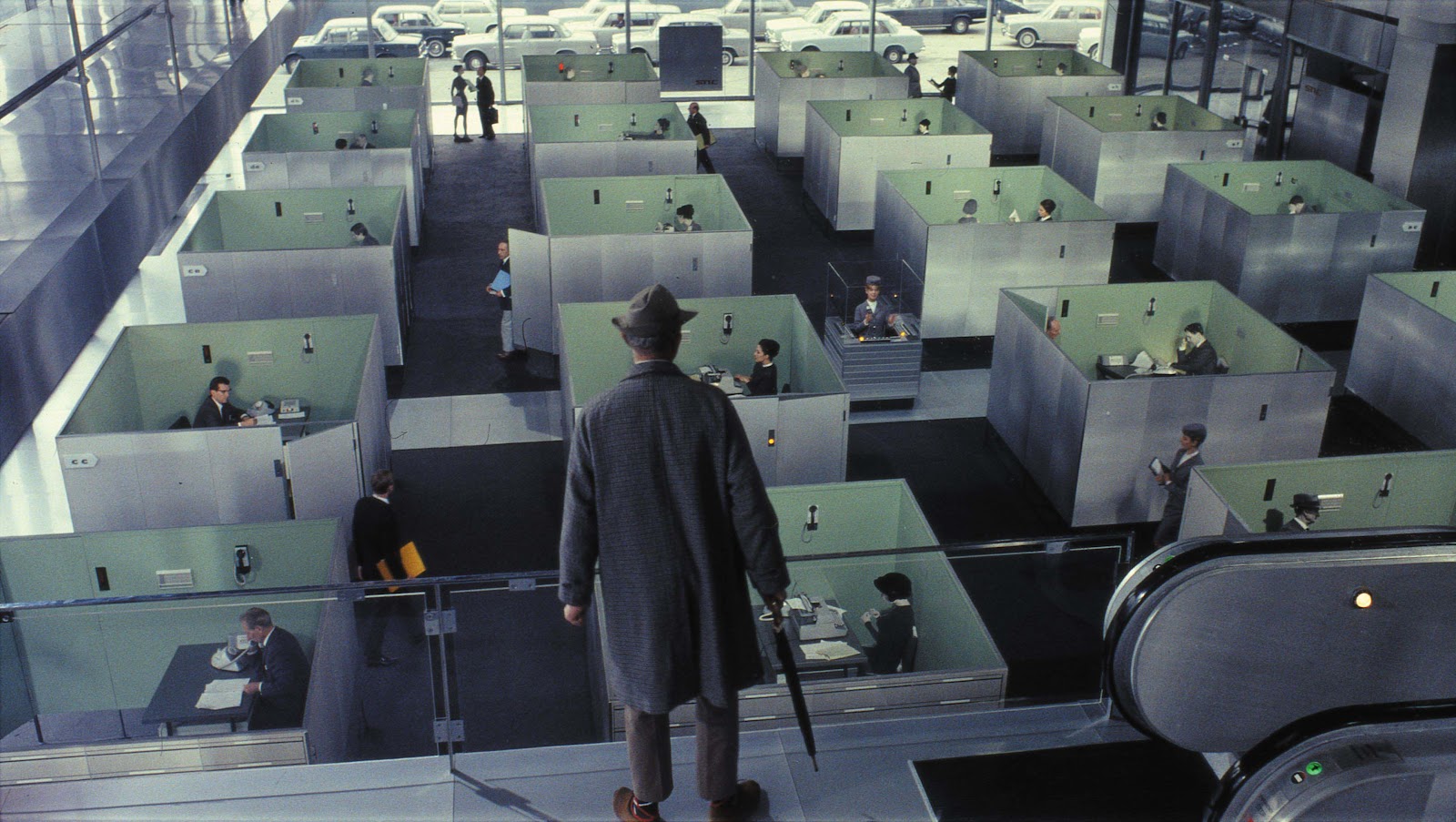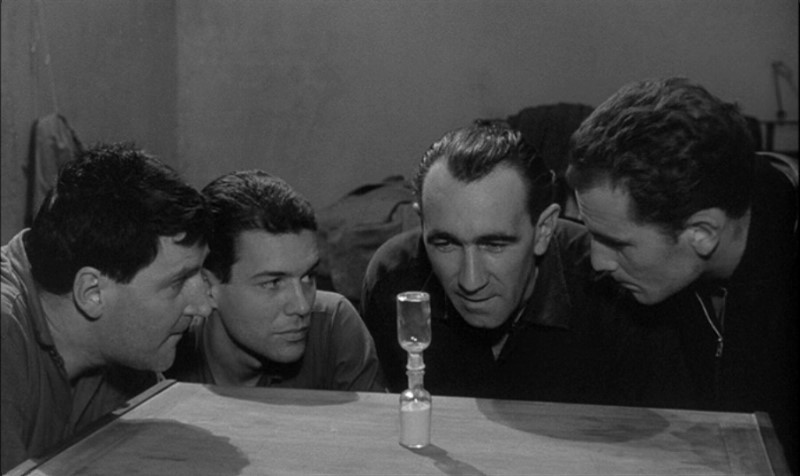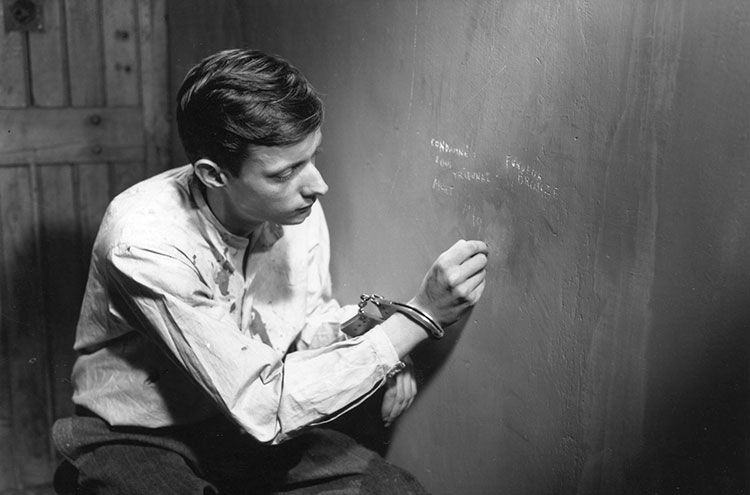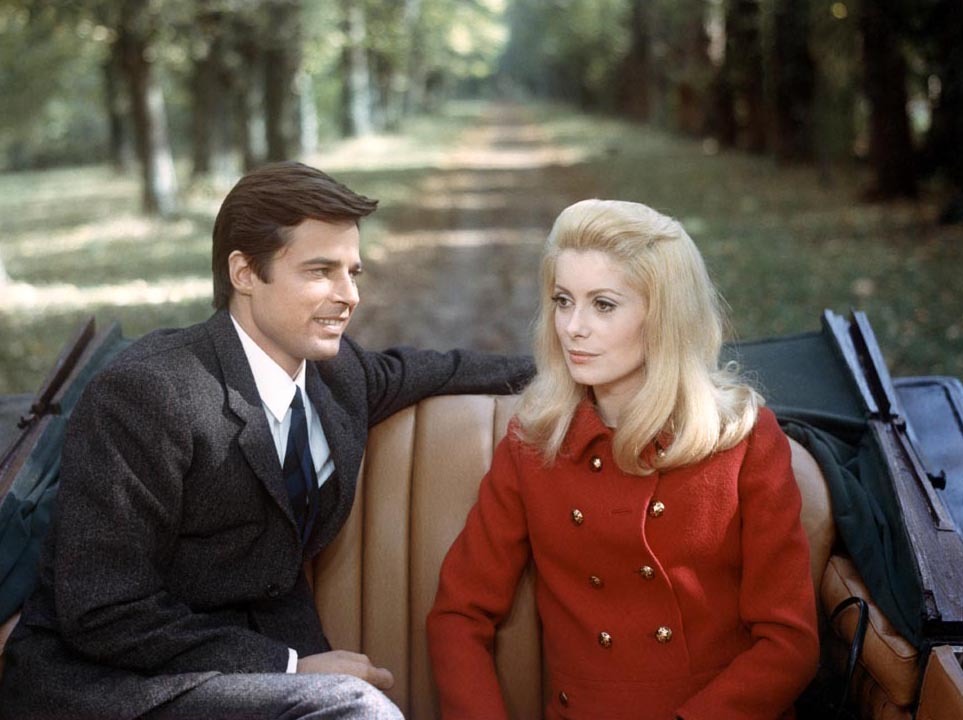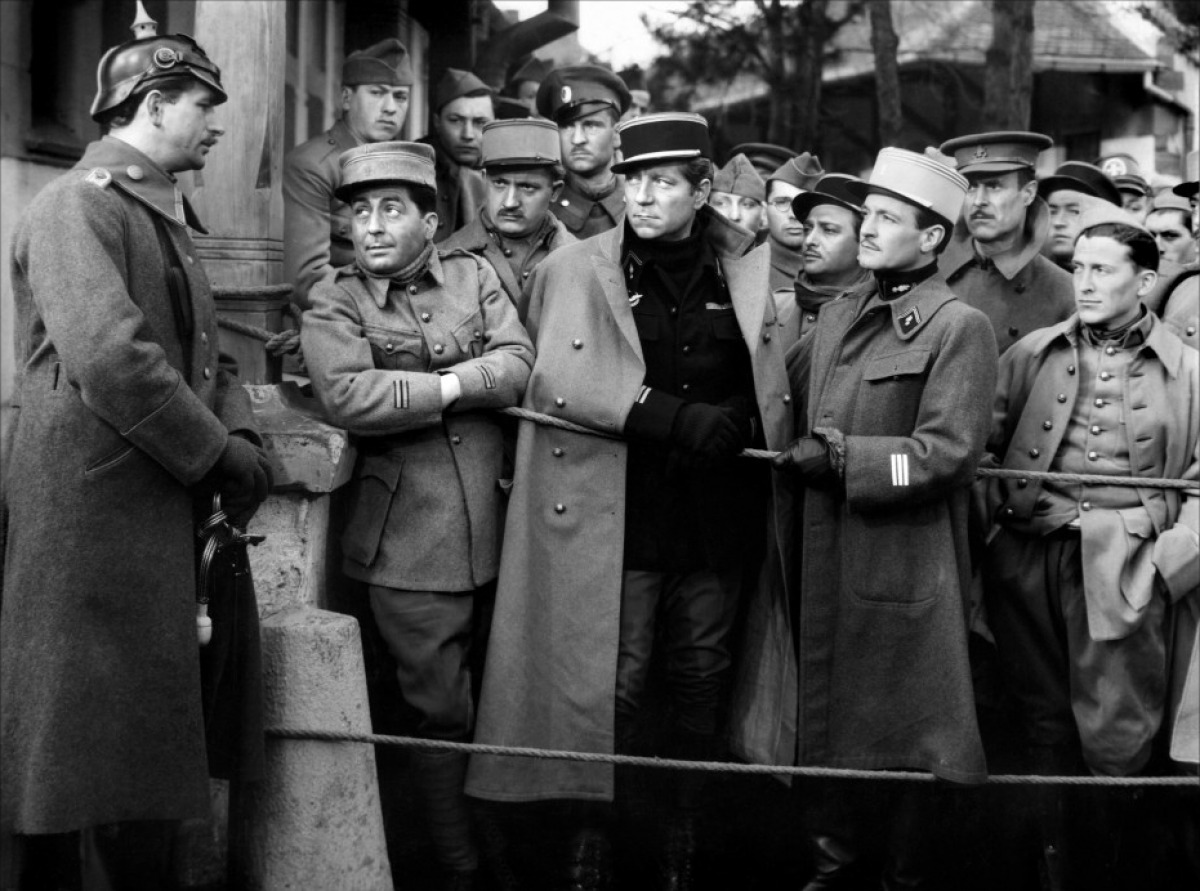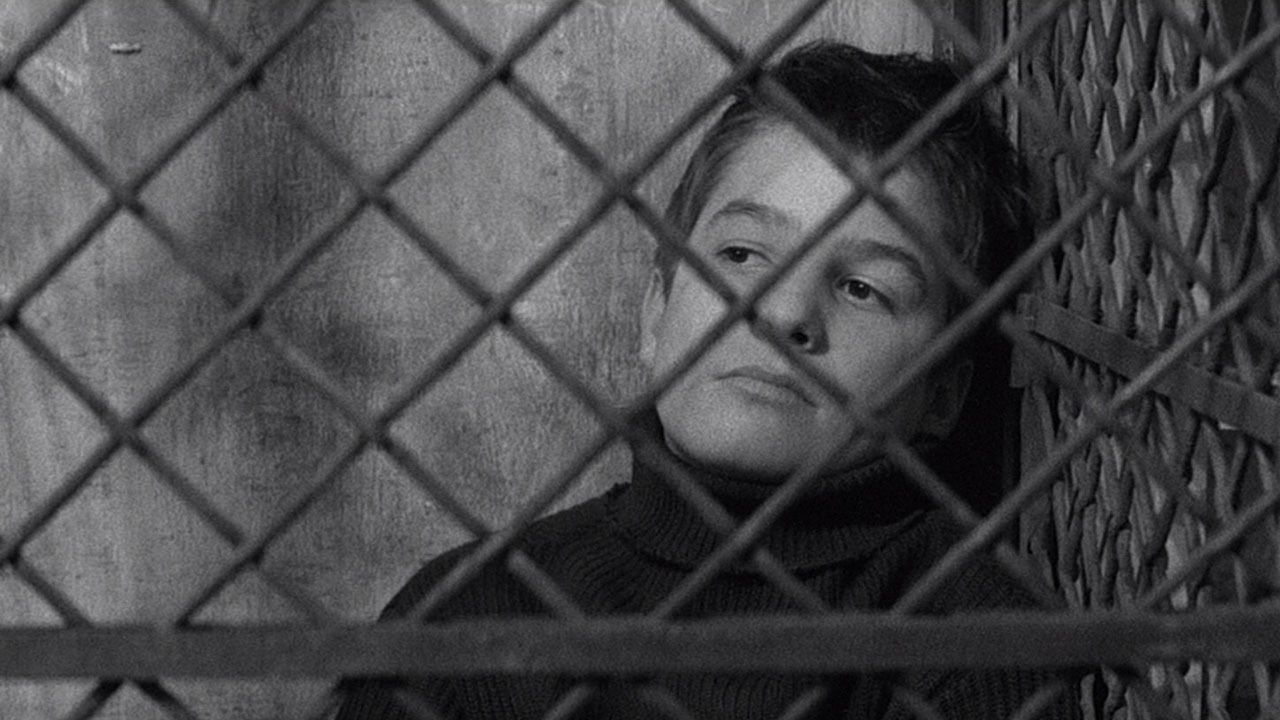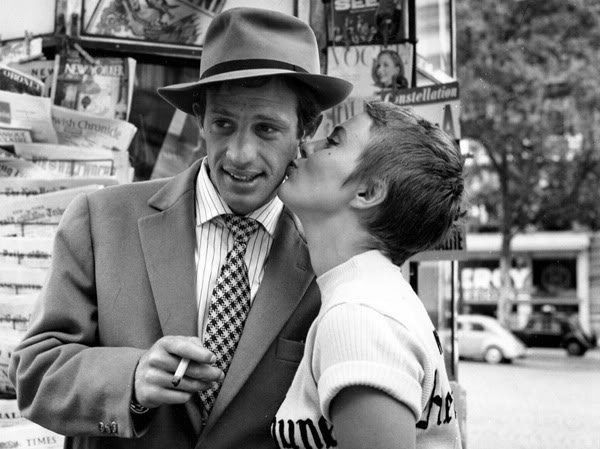7. Playtime
This is a Jacques Tati movie, perhaps his most recognized by the critics and public in general. It’s his fourth major movie, and it’s considered one of the best comedy movies of all time. Tati directs and plays the main role of his favorite and most endearing character, Monsieur Hulot.
It’s one of his most daring and original movies, creating a landscape of creativity, showing the Industrial France of the 60s, characterized by the development and innovation of a growing metropolis. Although being filmed on a set built purposely for the occasion, it creates the idea of a city and developing metropolis that was majorly influenced by the economic power of companies and its industrial role.
The movie has six sequences interconnected by two characters, Monsieur Hulot and Barbara, who encounter each other during the movie, which occurs in one day. The movie is majorly known by its subtle action, typical of Tati’s movies, visual comedy and almost no dialogue, with exception of background dialogue of almost no importance for the plot.
6. Le Trou
Le Trou is one of the most surprising movies of all time, for its creativity, originality and for its role in creating a new basis for the direction of movies with a daring and quite intriguing plot, becoming one of the pioneers in prison movies and a must-see movie for those who love cinema. Jacques Becker died weeks after the end of the shooting of the movie.
Becker decided to use non-actors for some of the roles. The main character Roland Darbant, portrayed by Jean Keraudy, was actually involved in a 1947 escape attempt. The use of non-professionals, although not noticed throughout the movie, gives the magic prison movies need to become masterpieces.
The plot is actually quite simple. Four inmates want to escape and decide to dig a tunnel, which started with a hole in their cell. The problem, and future cause for the twist, is the unexpected arrival of a new inmate, Gaspard. Geo, Roland, Manu and Monseigneur decide to accept the unexpected arrival and welcome him in the escape plan. Gaspard, at first, seems quite enthusiastic with the plan, but when the director, portrayed by André Bervil, calls him to his office, Gaspard starts to doubt his own escape.
Gaspard has to decide if he wants to escape or tell the director everything that is happening. Everything is set for the escape when doubt and distrust starts invading his cellmates’ heads. The end leaves you quite surprised with an ironic ending to an innovative movie that created a standard for prison movies.
5. A Man Escaped
Robert Bresson became one of the most notable and loved directors in the history of French cinema. There is no doubt of his importance to the transformation of cinema, mainly in the 50s and 60s, with metaphorical and religious approaches in most of his movies. “A Man Escaped” is a great example of a metaphorical approach of a prisoner who wants to escape.
Fontaine, a French Resistance member, was caught by German soldiers and imprisoned. Since the beginning, his intent is to escape. That intent is finally executed when he is put in a cell of the top floor with no handcuffs. From there he starts a long process of weeks trying to escape, removing boards from the door, making hooks and ropes from clothing and bedding.
Although it takes a long time, with the growing skepticism of other prisoners, and after Orsini, another one of the prisoners who wanted to escape was found out and shot, Fontaine doesn’t give up. A dilemma arises when Jost, a young boy who has joined the German army, is put in the cell with him. Fontaine has to make a choice: either he kills Jost or takes him with him.
4. Belle de Jour
It’s one of the masterpieces of French cinema, and perhaps Catherine Deneuve’s greatest movie. It puts her at the top of the industry, solidifying her position as the all time diva in cinema history. Directed by Luis Buñuel, Deneuve plays a woman who is a prostitute during weekday afternoons, while her husband is working.
Séverine Serizy, played by Deneuve, is a frigid woman who is unable to have sexual intercourse with her husband, who she loves, but traumatized by her own childhood problems. Séverine’s problem of frigidity may be caused by lack of excitement, caused by her routine life. Her fantasies involve bondage, domination and sadomasochism, fantasies she doesn’t have the courage to tell her husband, who although doesn’t like or wants her frigidity, respects her wishes.
The couple meets two friends, Henri Husson and Renée, while at a ski resort. After the meeting, Husson becomes infatuated by her beauty and approaches her several times, always getting rejected. Séverine learns through her friend that another friend of them is working at a brothel, intriguing Séverine, who fantasizes about going there. After serving her first customer, she starts working on weekday afternoons without her husband’s knowledge.
One of her customers, Marcel, who is a gangster, starts getting obsessed with her, threatening to tell her secret life to her husband. Séverine’s activities provoke Marcel to commit a horrendous act. Although she repents her actions, there is no turning back. Later, Pierre reappears to tell her husband his wife’s secret life. The ending is quite controversial and somehow confusing, and may be interpreted as Séverine’s new fantasy.
3. La Grande Illusion
Without a doubt, “La Grande Illusion” is one of the masterpieces in movie history. Released in 1937, it shows the realistic approach and drama of prisoners of war during World War I, and their attempt to escape and release themselves from the metaphorical and real prison that people face during a war or a conflict.
Even today, this movie is considered by many as one of the greatest movies ever made, being a landmark and a must-see war movie. It’s a protest by Renoir against the incoming 1939-1945 war and the rise of the Nazi Regime.
The plot is simple. Several prisoners are imprisoned in a POW camp and plan an escape. The trouble is that on the day of the escape, many of them are transferred to a highly secured prison managed by Major von Rauffenstein. Three members of the “old crew” are put together: Lieutenant Maréchal, Lieutenant Rosenthal and Captain Boeldieu.
This last one has a respectful relationship with the director of the prison, due to the fact that both have aristocratic blood and are soldiers at heart. The three plan an escape, but only Maréchal and Rosenthal actually escape.
2. Les Quatre Cents Coups
This is the first of five movies of the Antoine Doinel cycle, which is considered one of the best movie sagas of all time. It portrays the life of Antoine throughout his young life to his adult years, from age 14 until his mid-40s.
Antoine Doinel is portrayed by Jean-Pierre Léaud, one of Truffaut’s favorite actors, and although not being technically and dramatically accurate or very good, Léaud is still one of the most moving and remarkable actors of his time. The sequence of movies is sometimes considered as biographical, both for François Truffaut and Léaud, and presents a way of making movies that, at the time, was innovative and original.
Doinel is 14 years old, living in Paris with his mother and father. Not only does Doinel have to deal with the troubles of growing up in an always dynamic Paris, entering in the 60s when lots of changes occurred in a France that was ever-growing, but also he has to deal with his parents’ problems and quarrels and sometimes their “disdain”.
Doinel is not an exemplary student nor tries to be one. He feels rejected by his parents and from general society. He starts missing class and spends more time doing petty crimes with his buddy, René. With this movie being the first one of a series of five, the plot concentrates later on presenting what might be his future life and respective consequences, which will be shown in the following movies.
1. À bout de souffle
“À bout de souffle” is a reference to the way the leading character dies in the end of the movie, out of breath, with no chance to run away after a long chase with the police. Jean-Luc Godard is one of those directors you either love or hate. He is one of the pioneers of the French Nouvelle Vague, which took the place of other styles, such as the gangster or drama movies. It features the uprising of the legendary Jean-Paul Belmondo as one of the main figures of French cinema and the Nouvelle Vague.
Jean-Paul Belmondo plays Michel, a young delinquent who is a bit lost in life. After stealing a car, he kills a policeman. Michel is now on the run from the police and needs a place to hide from them. He turns to Patricia, a young student who hopes to become a journalist. She accepts to hide him and although they fell in love with each other, they are completely different from one another.
Perhaps, filled with guilt and a confusing protective mind, Patricia betrays him to the police. He runs from the police, eventually facing his own destiny. “À bout de souffle” may also be interpreted as a metaphorical ending to a young man who has resigned himself to his fate.
Author Bio: João Braga is a content writer and freelance translator of 5 different languages. His passion for movies began 12 years ago, starting with Bergman, Kurosawa and Truffaut’s movies. He has a “soft spot” for the intelligent and genial French Cinema.
